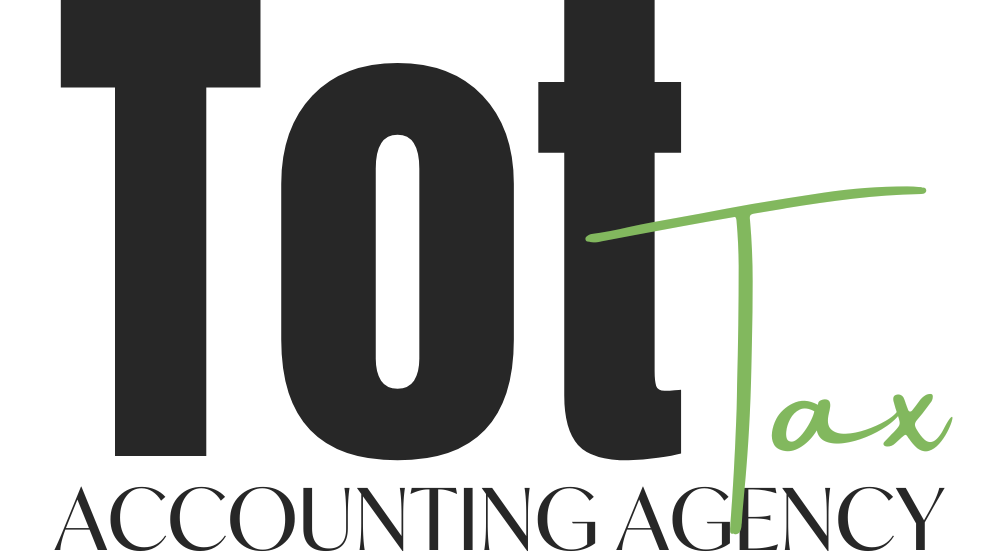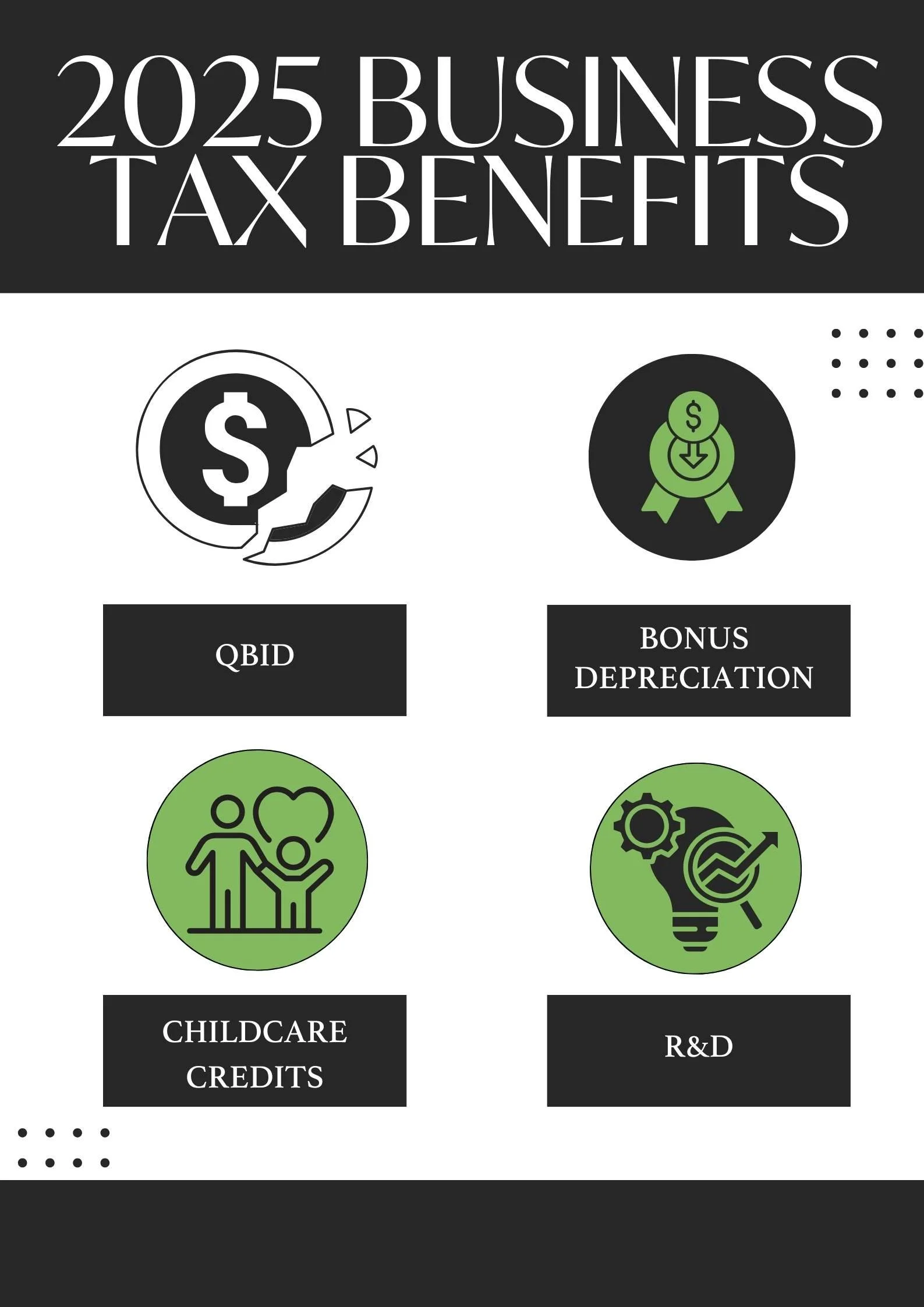Business Tax Updates for 2025: Unpacking the "One Big Beautiful Bill" for Your Company
The "One Big Beautiful Bill" (H.R. 1) has rolled out a transformative set of tax provisions for businesses in 2025. From permanent deductions to expanded credits, these changes could significantly boost your cash flow and reshape your tax strategy. At Tottax, we’re here to guide you through the top 10 updates and help you leverage these opportunities. Let’s dive into what’s new and how it impacts your business!
1. Section 199A Made Permanent
A Boost for Pass-Through Businesses The Qualified Business Income (QBI) deduction under Section 199A is now permanent, allowing owners of pass-through entities (sole proprietorships, S Corps, partnerships) to deduct 20% of QBI. A new minimum $400 deduction applies if you have at least $1,000 in QBI, reducing the tax burden for freelancers and small business owners.
However, Specified Service Businesses (SSBs)—like health, law, accounting, or consulting—face income-based phase-outs and are subject to W-2 wage or unadjusted property basis l limits.
Pro Tip: Work with your Tottax advisor to structure your business around wage or property tests to maximize QBID.
2. Permanent 100% Bonus Depreciation
Immediate Asset Write-Offs H.R. 1 permanently extends 100% bonus depreciation under IRC §168(k) for qualified property (new or used tangible assets with a recovery period of 20 years or less, including qualified improvement property) placed in service after January 19, 2025. This is a game-changer for businesses in real estate, manufacturing, or those investing in equipment, offering instant cash flow relief.
Note: No retroactive relief is available for 2023 or 2024 property.
Action Item: Plan your 2025 capital investments now to take advantage of this deduction.
3. Higher 1099 Reporting Thresholds
Less Paperwork Starting in 2026, the threshold for issuing Forms 1099-MISC and 1099-NEC rises from $600 to $1,000 per contractor per month, with annual inflation indexing from 2024. For 2025, the $600 threshold remains. Form 1099-K reporting for digital payments increases to $20,000 per year for 2025.
Why It Matters: Fewer 1099s mean less administrative hassle for businesses with many contractors.
4. Domestic R&D Expensing
Fueling Innovation: Domestic research and experimental (R&E) expenses can now be fully deducted in the year incurred, effective for tax years 2025–2029. Small businesses (average annual receipts ≤ $31M) can retroactively expense R&D costs from 2022–2024. Foreign R&D remains subject to 15-year amortization.
This is a major win for tech, software, and innovation-driven businesses, freeing up cash for growth.
Pro Tip: Document your R&D activities meticulously to claim this deduction.
5. Business Interest Deduction
Back to EBITDA Starting in 2025, the business interest deduction limit under IRC §163(j) reverts to 30% of EBITDA (Earnings Before Interest, Taxes, Depreciation, and Amortization), up from the stricter EBIT standard.
Action Item: Review your financing structure with Tottax to optimize interest deductions.
6. Paid Family and Medical Leave Credit
Permanent and Expanded The Paid Family and Medical Leave Credit (IRC §45S) is now permanent, effective for 2026. Employers can claim it for insurance premiums covering paid leave, not just direct leave provision. The credit is available in all states, and employee eligibility drops from 12 to 6 months of service.
Why It Matters: This makes it easier for small businesses to offer competitive leave benefits.
7. Employer-Paid Student Loan Assistance
Permanent Benefit Under IRC §127, employers can provide up to $5,250 per year tax-free for employee student loan payments, now a permanent benefit starting in 2026. The cap will adjust for inflation from 2027.
Pro Tip: Add this to your benefits package to attract and retain talent.
8. Employer-Provided Child Care Credit
Bigger Incentives The child care credit under IRC §45F is permanently restored and enhanced, with a 50% credit rate on up to $600,000 in expenses for on-site or contracted child care services, effective 2026. This encourages businesses to support working parents.
Action Item: Explore childcare partnerships to claim this credit.
9. Dependent Care Assistance Program
Higher Limits The exclusion for employer-provided dependent care assistance (IRC §129) increases $7,500 (MFJ) or $3,750 (single) starting in 2025. Employees can exclude these amounts from income via workplace FSAs, enhancing your benefits package.
Why It Matters: Competitive benefits help retain employees.
10. EV and Clean Energy Credits:
Act Fast The Commercial Clean Vehicle Credit ends September 30, 2025, and EV charger and renewable energy credits (e.g., solar) phase out by mid-2026. Businesses must place qualifying assets in service before these deadlines.
Must-Do: If you’re eyeing an EV for business use, purchase it in 2025 to claim the credit.
Your Next Steps with Tottax The 2025 tax changes offer significant savings, but phase-outs and deadlines demand careful planning. Whether you’re a small business owner, tech innovator, or employer, Tottax is your partner in navigating these updates. From QBID optimization to timing EV purchases, we’ll craft a tailored strategy to maximize your benefits.
Book a consultation with a Tottax advisor today to unlock your 2025 tax savings! Visit Tottax Accounting Agency to schedule.
Disclaimer: This summary is for informational purposes only and does not constitute tax advice. Consult a qualified tax advisor for personalized recommendations. View the full bill at H.R. 1 – Congress.gov.










